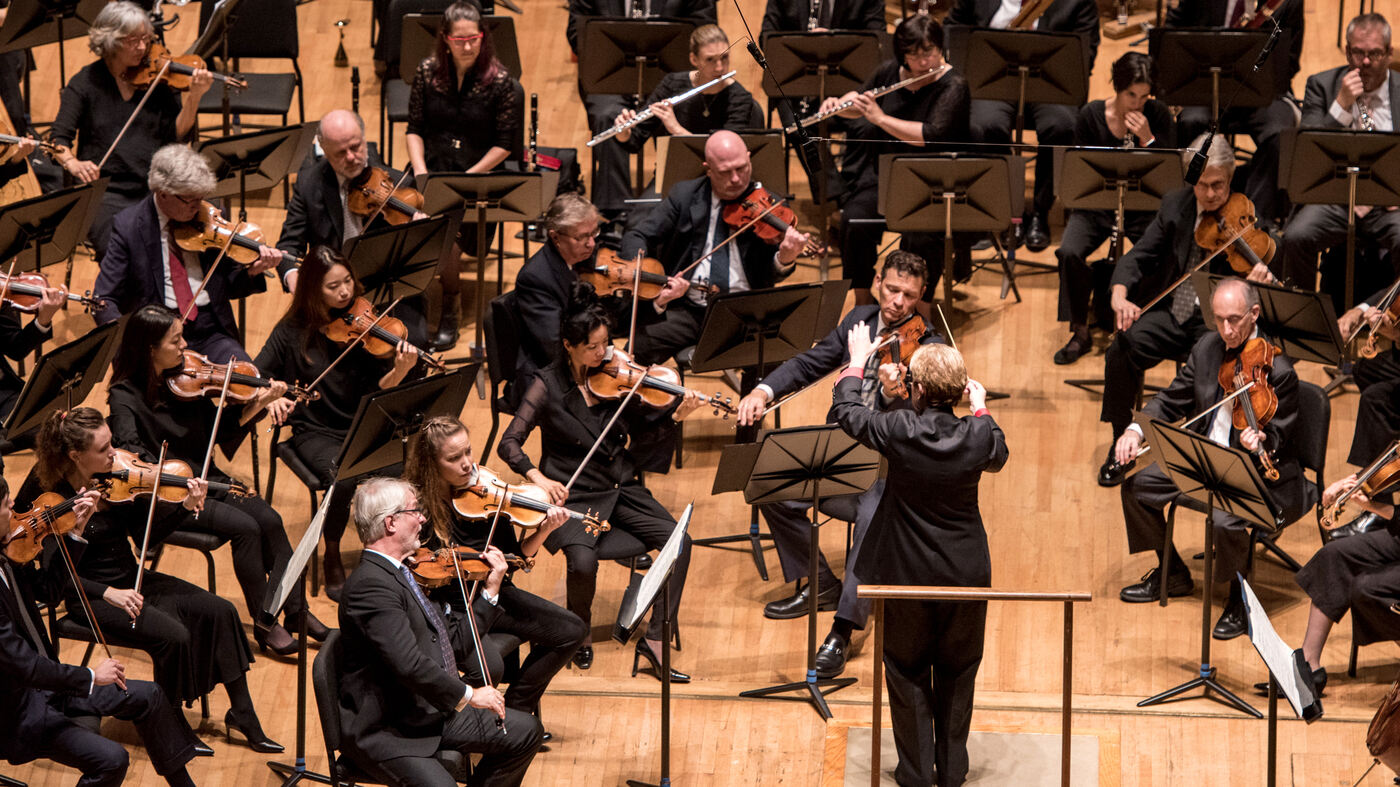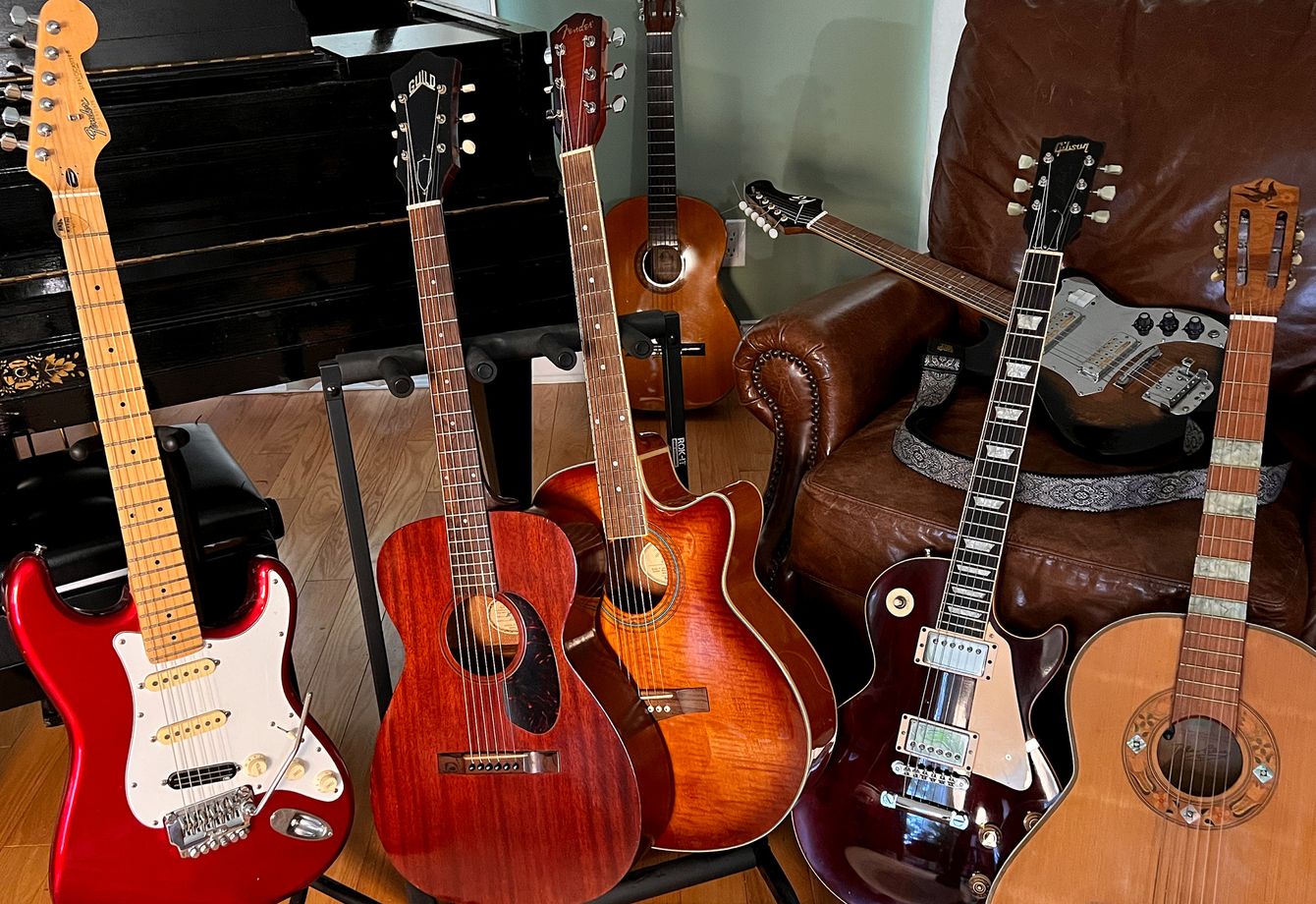Home>Production & Technology>Soundtrack>What Is The Difference Between A Soundtrack And A Score


Soundtrack
What Is The Difference Between A Soundtrack And A Score
Published: February 18, 2024
Discover the key dissimilarities between a soundtrack and a score in the realm of music production and film composition. Learn about the unique characteristics of a soundtrack and its role in enhancing visual storytelling. Explore the nuances of soundtracks and scores and their impact on cinematic experiences.
(Many of the links in this article redirect to a specific reviewed product. Your purchase of these products through affiliate links helps to generate commission for AudioLover.com, at no extra cost. Learn more)
Table of Contents
Introduction
When we immerse ourselves in the world of cinema, the music playing in the background has the power to evoke emotions, enhance storytelling, and transport us to different realms. This essential element of filmmaking comes in two primary forms: the soundtrack and the score. While the terms are often used interchangeably, they serve distinct purposes in the realm of film and music production.
Understanding the difference between a soundtrack and a score is crucial for anyone who appreciates the art of filmmaking and the significance of music in storytelling. Both components contribute to the overall impact of a film, enriching the audience's experience and leaving a lasting impression.
In this article, we will delve into the definitions of a soundtrack and a score, explore the differences between the two, and highlight their respective roles in the world of cinema. Additionally, we will shed light on the significance of soundtracks and scores in film, emphasizing their profound influence on storytelling and audience engagement. By the end of this journey, you will gain a deeper appreciation for the artistry and craftsmanship behind these integral components of the cinematic experience.
Definition of Soundtrack
A soundtrack encompasses all the music used in a film, including songs, background music, and any additional audio elements that contribute to the overall sonic landscape of the movie. It is a compilation of various tracks that complement the visual aspects of the film, creating a harmonious blend of sound and imagery. Soundtracks often feature popular songs or pre-existing music that resonates with the themes or emotions portrayed in the movie.
Moreover, soundtracks can play a pivotal role in capturing the essence of a particular era, setting, or cultural backdrop depicted in the film. By incorporating well-known songs or culturally relevant music, soundtracks have the power to transport audiences to specific time periods or geographical locations, thereby enhancing the authenticity and relatability of the cinematic experience.
Soundtracks are not limited to original compositions created specifically for a film; they can also include licensed tracks that effectively convey the intended mood, tone, or narrative of the story. Whether it’s an iconic rock anthem intensifying a high-octane action sequence or a poignant ballad underscoring a heartfelt moment, the soundtrack serves as a dynamic and multifaceted component of the cinematic tapestry.
Furthermore, soundtracks are often released as standalone albums, allowing audiences to relive the emotional journey of the film through its music. These albums can become cherished mementos for fans, serving as a tangible connection to the cinematic narratives and characters that have left a lasting impact.
Definition of Score
Unlike a soundtrack, which comprises pre-existing songs and music, a film score refers to the original music specifically composed to accompany a movie. Composers craft scores to intricately weave through the narrative, heightening emotional beats, emphasizing pivotal moments, and providing a cohesive musical backdrop for the entire film. The score is custom-tailored to the nuances of the story, characters, and themes, serving as a bespoke sonic tapestry that resonates with the visual elements of the film.
Composers work closely with directors and producers to understand the underlying essence of the film, allowing them to infuse the score with thematic motifs, leitmotifs for characters, and musical cues that enrich the storytelling. Through the seamless integration of orchestral arrangements, electronic elements, or a fusion of musical styles, film scores have the power to elicit profound emotional responses, effectively elevating the audience’s connection to the cinematic journey.
Furthermore, film scores are meticulously synchronized with the pacing and rhythm of the visuals, enhancing the overall cinematic experience by creating a symbiotic relationship between sight and sound. The orchestration of the score is a testament to the composer’s artistry, as they skillfully navigate the ebb and flow of emotions, tension, and resolution within the film’s narrative arc.
Unlike soundtracks, which may feature individual songs or tracks, a film score is a cohesive, continuous musical composition that unfolds throughout the entirety of the movie. It serves as a unifying thread that binds the various elements of the film together, underscoring the dramatic, comedic, or poignant moments with precision and finesse.
Moreover, film scores often become synonymous with the identity of the film itself, leaving an indelible imprint on the audience’s memory. Iconic themes and motifs from film scores have the ability to evoke nostalgia, transport listeners back to specific cinematic moments, and evoke a profound sense of connection to the stories and characters that have touched their hearts.
Differences Between Soundtrack and Score
While both the soundtrack and the score contribute to the auditory tapestry of a film, they differ significantly in terms of their composition, purpose, and integration within the cinematic experience.
- Composition: The primary distinction between a soundtrack and a score lies in their composition. Soundtracks comprise pre-existing songs and music, often licensed from various artists or music labels. In contrast, a film score consists of original music specifically composed for the movie by a talented composer or a team of composers. The score is custom-crafted to align with the thematic, emotional, and narrative elements of the film, enhancing its storytelling impact.
- Purpose: Soundtracks and scores serve different purposes in the realm of film. Soundtracks are curated to complement the visual and emotional themes of the movie, often featuring popular songs or tracks that resonate with the storyline. They contribute to the cultural and temporal ambiance of the film, enhancing its relatability and emotional resonance. On the other hand, film scores are meticulously designed to intricately synchronize with the narrative beats, character dynamics, and emotional nuances of the film. The score acts as a cohesive musical narrative that elevates the storytelling, emphasizing pivotal moments, and eliciting emotional responses from the audience.
- Integration: In terms of integration, soundtracks and scores occupy distinct roles within the cinematic landscape. Soundtracks are often interspersed throughout the film, accompanying specific scenes or montages to evoke particular moods or enhance the overall atmosphere. Conversely, a film score is seamlessly interwoven with the entire fabric of the movie, serving as a continuous musical backdrop that underscores the emotional and narrative progression from the opening scene to the closing credits.
These differences underscore the unique contributions of soundtracks and scores to the cinematic experience, showcasing the diverse ways in which music enhances storytelling, evokes emotions, and leaves a lasting impression on audiences.
Importance of Soundtrack and Score in Film
The significance of soundtracks and scores in film cannot be overstated, as they play pivotal roles in shaping the audience’s emotional engagement, enhancing storytelling dynamics, and leaving a profound impact on the overall cinematic experience.
- Emotional Resonance: Both soundtracks and scores are instrumental in eliciting emotional responses from the audience. Soundtracks, featuring curated songs and music, can evoke nostalgia, intensify dramatic moments, or infuse scenes with cultural relevance. On the other hand, film scores intricately underscore the emotional beats of the narrative, heightening tension, accentuating character dynamics, and imbuing pivotal moments with profound emotional depth.
- Enhanced Storytelling: Soundtracks and scores contribute to the narrative cohesiveness and thematic resonance of a film. Soundtracks can underscore character motivations, depict cultural contexts, and evoke specific time periods, enriching the storytelling tapestry. Meanwhile, film scores serve as a narrative companion, seamlessly aligning with the visual elements to amplify the storytelling impact, emphasize character arcs, and immerse the audience in the cinematic world.
- Memorable Cinematic Moments: Iconic soundtracks and scores have the power to etch cinematic moments into the audience’s memory. Whether it’s a climactic battle sequence heightened by an adrenaline-pumping soundtrack or a poignant farewell underscored by a hauntingly beautiful score, the music becomes intertwined with the audience’s recollection of the film, creating enduring, emotionally charged memories.
- Atmospheric Immersion: Soundtracks and scores contribute to the overall atmosphere and immersive quality of a film. They transport audiences to different emotional landscapes, cultural milieus, or fantastical realms, enriching the visual narrative with auditory depth and resonance. The music becomes a conduit for audience immersion, fostering a deeper connection to the characters and their experiences.
Ultimately, the combined impact of soundtracks and scores elevates the cinematic experience, leaving a lasting imprint on audiences and enriching the storytelling artistry of the film medium. Their collective influence underscores the profound synergy between music and visual storytelling, demonstrating the transformative power of a well-crafted soundtrack and score in the realm of cinema.
Conclusion
As we conclude our exploration of the differences between soundtracks and scores, it becomes evident that both components are indispensable to the art of filmmaking, contributing distinct yet complementary elements to the cinematic experience. Soundtracks, featuring curated songs and pre-existing music, serve as cultural touchstones, emotional conduits, and atmospheric enhancers, enriching the film’s relatability and emotional resonance.
On the other hand, film scores, with their original compositions intricately tailored to the narrative, characters, and thematic motifs, act as bespoke musical narratives that elevate storytelling dynamics, evoke profound emotional responses, and leave an indelible imprint on the audience’s memory. The symbiotic relationship between sound and image is exemplified through the seamless integration of soundtracks and scores, underscoring the transformative power of music in the world of cinema.
It is essential to recognize the artistry and craftsmanship inherent in both soundtracks and scores, as they represent the collaborative efforts of musicians, composers, directors, and producers striving to create immersive, emotionally resonant cinematic experiences. Whether it’s the evocative strains of a beloved song in a pivotal scene or the sweeping orchestral movements of a poignant score, the impact of music on the cinematic landscape cannot be overstated.
Ultimately, the coalescence of soundtracks and scores underscores the profound influence of music in shaping the emotional landscape, thematic depth, and immersive quality of films. As audiences continue to be captivated by the magic of cinema, the enduring legacy of iconic soundtracks and scores serves as a testament to the enduring power of music in storytelling, solidifying their rightful place in the pantheon of cinematic artistry.











